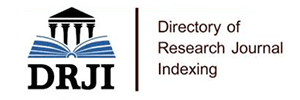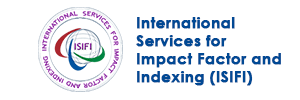
Journal Basic Info
**Impact Factor calculated based on Google Scholar Citations. Please contact us for any more details.Major Scope
- Blood Cancer
- Paediatric Cancers
- Targeted Therapy
- Immunology
- Kidney Cancer
- Breast Cancer
- Endometrial Cancer
- Melanoma/Skin Cancer
Abstract
Citation: Clin Oncol. 2023;8(1):2020.DOI: 10.25107/2474-1663.2020
Extensive Coding and Antisense-Transcript Based Characterization of Indian Medulloblastoma a Précised Approach
Neetu S, Dinesh KS, Ratnesh KT, Nawazish A, Pratap S, Abhishek M, Ajay KS, Uma Shankar S, Chhitij S, Bal Krishna O and Devendra KG
Molecular Biology Unit, Centre for Advance Research, King George's Medical University, India
Department of Pediatric Surgery, Super Specialty Pediatric Hospital & Post Graduate Teaching Institute, India
Department of Pathology, King George's Medical University, India
Department of Neurosurgery, King George's Medical University, India
These authors contributed equally to this work
*Correspondance to: Neetu Singh
PDF Full Text Research Article | Open Access
Abstract:
Medulloblastoma (MB) is a malignant pediatric brain-tumor with a high death rate. A comprehensive protein-coding and regulatory-transcriptomics are needed for personalized medicine. Molecularly sub-grouped 22 histopathologically-characterized Medulloblastoma (MB) into Group 4-MB (G4), Group 3-MB (G3), Wnt-MB, and SHH-MB by two accepted methods molecular inversion probebased array and transcript-probe-based NanoString assay. Out of 22, 12 samples (10 MB and 2 controls) including all subgroups of MB were considered for long and short-read sequencing. Assembly was done through PacBio-ToFU pipeline and assessed through SQANTI using a pretreating pipeline with 47 distinctive-features. Based on canonical/highly-conserved splice-junctions induced transcriptomics-complexity the MB-patients were categorized into low- or high-risk tumors which may be considered for precise treatment. Significant upregulation of Antisense-transcripts (AS), EZH2 in SHH, CENPX in SHH/G-3, COL18A1 in G-4 MB and transcripts TTR in SHH/ G3/G4-MB; PDLIM3 and SFRP1 in SHH; NRL in G-3; and NNAT, an imprinted gene in G-4 MB were observed. The identified ASs may be used as a target for developing anti-antisense synthetic peptides or transcriptional-inhibition through classical CRISPR/Cas9 in combination with SHH/ NRL/NNAT inhibitors may be used as a precise approach to target MB. Further, TTR identified in cerebrospinal fluid may be used as a marker to understand the prognosis of the disease.
Keywords:
Medulloblastoma; SQANTI; Antisense transcripts; TTR; PDLIM3; SFRP1; NRL; NNAT; EZH2-AS1; CENPX; COL18A1-AS1
Cite the Article:
Neetu S, Dinesh KS, Ratnesh KT, Nawazish A, Pratap S, Abhishek M, et al. Extensive Coding and Antisense- Transcript Based Characterization of Indian Medulloblastoma a Précised Approach. Clin Oncol. 2023; 8: 2020..













